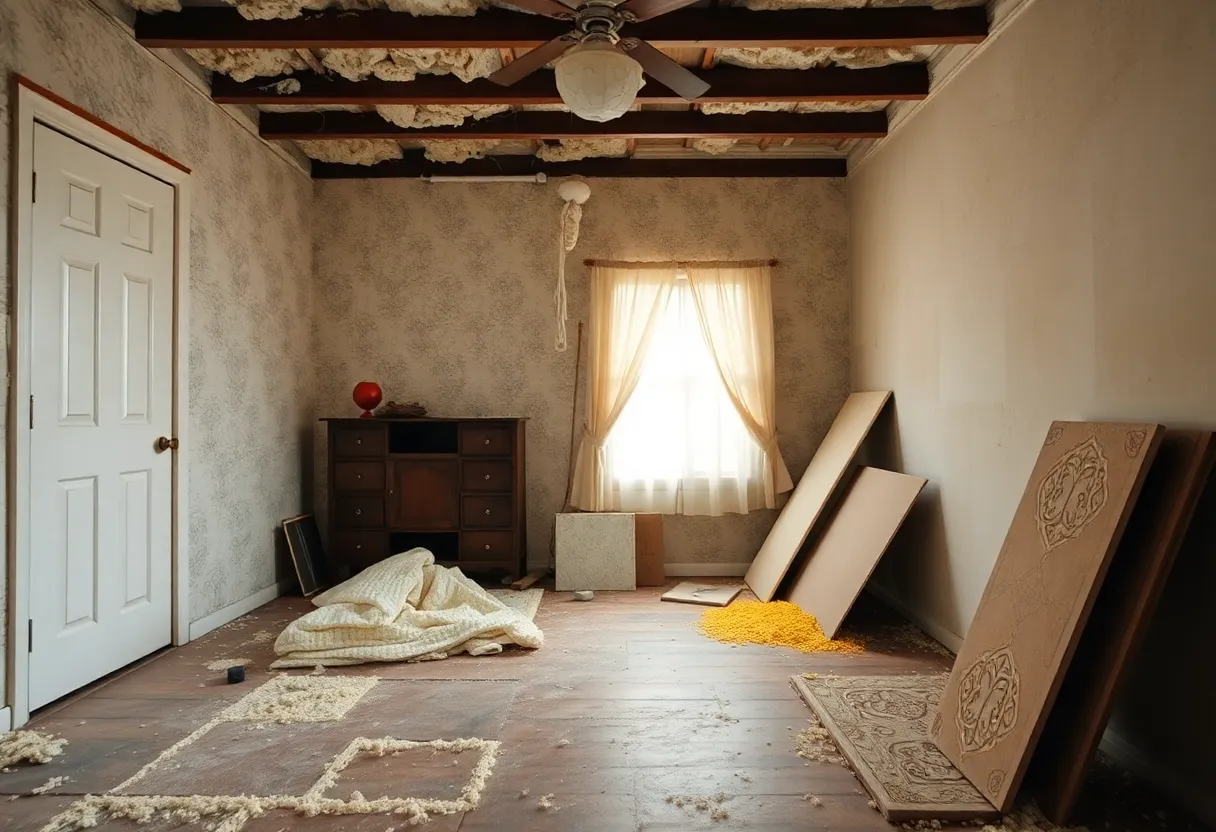News Summary
The USS Vogelgesang, a Gearing-class destroyer, highlights the dangers of asbestos exposure faced by Navy veterans. This vessel, built from 1945 to 1980, has contributed to a health crisis due to its extensive use of asbestos that led to serious illnesses among crew members. With many now suffering from diseases linked to asbestos, including pleural mesothelioma, understanding rights and seeking compensation is vital for affected veterans. Awareness and legal action are essential steps toward justice for those impacted by this hidden danger.
Unmasking the Asbestos Legacy of USS Vogelgesang: A Hidden Threat to Navy Veterans
In the years surrounding World War II, the U.S. Navy heavily relied on asbestos in ship construction, inadvertently planting the seeds of a health crisis that would emerge decades later. One vessel emblematic of this toxic legacy is the USS Vogelgesang (DD-862), a Gearing-class destroyer that served from 1945 to 1980. Constructed with materials laden with asbestos, this ship has become a focal point for understanding the risks of asbestos exposure among Navy veterans.
The USS Vogelgesang: A Pillar of Naval Service
Commissioned near the end of World War II, the USS Vogelgesang was named in honor of Rear Admiral Carl Theodore Vogelgesang. Over its 35 years of active service, the destroyer was actively involved in numerous military operations, including Mediterranean deployments, Vietnam War missions, and support for the early U.S. space program. The ship was not only equipped for anti-aircraft and surface combat roles but was also modernized to address the Cold War’s evolving threats.
Asbestos: The Undeniable Silent Killer
Though it was deemed essential for its thermal insulation and flame-resistant properties, the extensive use of asbestos aboard the USS Vogelgesang has tragically resulted in countless cases of pleural mesothelioma, asbestosis, and other debilitating respiratory ailments. Asbestos materials were integrated throughout the vessel’s structure and systems, especially in areas such as the engine room and boiler spaces, posing a significant health threat to crew members.
Navy veterans who served on the USS Vogelgesang are now facing a grim legacy. Many have developed serious illnesses years or even decades after their exposure. The long latency period associated with asbestos-related diseases means that symptoms typically don’t surface until 20 to 50 years post-exposure, often leaving victims in dire situations where effective treatment is no longer viable.
Those Most at Risk: Crew Members’ Professions
While all crew members were at risk of asbestos exposure, certain job roles were particularly hazardous. Affected professions included:
- Boiler Technicians: Constantly in cramped, poorly ventilated spaces with high-pressure boiler systems insulated with asbestos.
- Pipefitters: Exposed to asbestos while maintaining the ship’s piping systems, especially during repairs.
- Engine Room Personnel: Surrounded by machinery insulated with materials known to liberate toxic fibers when damaged.
- Machinery Technicians: Often handled systems containing asbestos seals and gaskets, releasing harmful particles during standard maintenance.
- Electricians: Regularly worked on electrical systems protected by asbestos, risking inhalation of fibers during repairs.
- Shipyard Workers: Those involved in the construction and modernization phases faced some of the highest levels of exposure without adequate protective measures.
The Asbestos Truth: Condemned by Profit
The U.S. Navy mandated the extensive use of asbestos from suppliers and manufacturers who were aware of its carcinogenic properties. However, they chose to prioritize profitability over the health and safety of service members. This negligence has resulted in an alarming number of deaths among those exposed — more personnel have succumbed to asbestos-related diseases than to combat injuries.
Seeking Justice: The Path to Compensation
For Navy veterans diagnosed with mesothelioma or other asbestos-related conditions, understanding their rights is crucial. Veterans can pursue disability compensation through the Department of Veterans Affairs (VA), often receiving a 100% disability rating. This process, while challenging, provides access to specialized medical care and financial support.
Moreover, affected veterans may be eligible to seek compensation from the companies responsible for supplying asbestos products. Legal actions over the years have led to significant settlements, and in cases where companies went bankrupt due to liabilities, trust funds were created specifically to compensate victims of asbestos exposure.
A Call to Action: Don’t Delay—Know Your Rights
If you or someone you know served aboard the USS Vogelgesang and has been diagnosed with an asbestos-related illness, it’s crucial to act swiftly. Consulting with a knowledgeable asbestos lawyer can provide guidance through the complexities of legal claims and VA benefits. Understanding your exposure and the options available is key in maximizing compensation and ensuring that families are supported during these challenging times.
The legacy of asbestos on the USS Vogelgesang serves as a stark reminder of the hidden dangers that some veterans face. Awareness, advocacy, and action can lead to justice for those affected by this preventable tragedy, ensuring that the sacrifices of Navy personnel throughout history are honored and their health is safeguarded.
Deeper Dive: News & Info About This Topic
HERE Resources
USS Comte de Grasse Veterans at Risk from Asbestos
Tragic Legacy of the USS Blandy: Heroes Affected by Asbestos
USS Bausell Crew Faces Asbestos-Related Health Crisis
USS Bigelow: Asbestos Legacy Puts Veterans at Risk
The Dark Legacy of Asbestos Exposure Among Veterans: A Continual Struggle
The Hidden Cost of Service: Asbestos Exposure on the USS Higbee
USS New (DD-818): A Legacy of Valor and Asbestos Dangers
Recent Legal Victory for Mesothelioma Victim Against Asbestos Company
Unveiling the Hidden Dangers: The USS Rich’s Asbestos Legacy
The USS Shelton: A Legacy of Valor and Asbestos Peril



















